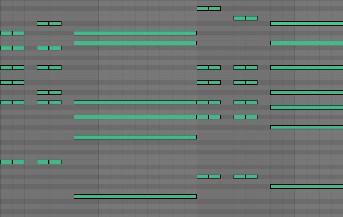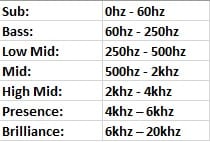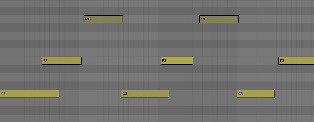15 Essential tips for producing Future Bass
Future Bass has been around for quite a few years now but reached its peak around 2016 – 2017 with the release of Flumes Skin album, thus why I have created this article containing a bunch of Future bass tips and tricks. I love this genre because of its iconic glimmering arps, wide super saws, chirpy vocal chops, and deep reece basses. If you love Future Bass as much as me then the following 15 Essential tips for producing future bass will appeal to you.
- Pick your vibe
- Reference tracks
- Think out of the box
- Future bass chords
- Super saw stacks
- Add that human feel
- The power of white noise
- Kick, bass and sidechain
- Melodies and vocal chops
- Modulation and automation
- Leave empty space
- Foley
- Effects and builds
- Compress
- The perfect mix
I believe Future bass is one of the hardest genres to produce. Mainly because its complexities in unique sound design and chord voicings are used in a way that creates an emotional experience for the listener. If done properly, each individual layer is glued together with absolute perfection.
So, let us dive in a have a look at my top 15 Future Bass tips and tricks.
1. Pick your vibe
I think this tip applies to all musical genres, not just future bass. When starting a new track, it’s always a good idea to pick a vibe of your song. A general direction you want the track to progress towards.
Each song (not just Future Bass) always has an element that grabs the listeners attention. An element that stands out. I usually pick one or two elements that I want my new track to focus on. Something like Super saws, Drums or 808. With this kept in mind, everything else can be used to emphasize these elements, allowing the vibe of your track to remain prominent.
Also, pick a word that you want your track to relate to. For example, on the last track I created, I chose the word ‘Petite’. I wanted it to feel relaxed, calm and cute. Picking a word helps stay focused on a direction.
Another very important step to consider when picking your vibe is the emotional direction of your track. Do you want it to feel sad? Do you want it to feel happy? Most future bass tracks are in a minor key. F minor or G minor are popular choices but experiment with different keys.
Generally, minor keys have a darker vibe to them, while major keys usually have a happier vibe.
Putting in a little time and thought now will help you so much later. Decisions become easy because if they don’t fit into your vibe, they can be thrown out and replaced with something that does.
Future bass tips and tricks to remember:
- Pick 1 or 2 stand out elements, such as drums, or vocal chops.
- Pick a word you want your song to relate to, like glitchy, or distorted or petite.
- Lastly chose a happy vibe or sad vibe.
- Write these down and keep them next to your computer.
2. Reference tracks
Learn how to pick the right reference track HERE. I personally am a massive planner. I like to plan a track first, then execute. This helps dramatically with my workflow. Because future bass is so in-depth, I like to set out as many things as I can before I start producing.
Using reference tracks is one of the most important steps in learning how to produce radio quality music. I think one of the biggest parts of music production, is learning what sounds good and what doesn’t. We are basically retraining the ear to listen again.
Reference tracks can help so much with this. They give you a side by side comparison of volume levels, structure, musical elements, etc and each time you compare, you get better at listening.
I analyze my reference tracks before I begin, so I can develop the entire structure of the song. Generally, future bass tracks are structured as follows.
Intro – Verse – Build – Chorus – Verse – Bridge – Chorus – Chorus – Outro
Pick your favorite song and break down its structure. See where they place their builds and chorus and then mark that in your DAW. I use Ableton live 10, so it is easy to place markers for each section.
Future bass tips and tricks to remember:
- Listen to your favorite songs and analyze them.
- Plan and mark out your song structure.
- Keep your reference track muted and unmute when you’re ready to compare.
3. Think out of the box
Don’t be shy to experiment a little. Try and step outside of your comfort zone. Future bass is a genre where anything goes. Weird redux kicks with over compressed hats and crashes. Reversed reverb tails to help introduce vocals or even before drops.
In my opinion, thinking outside of your comfort zone is one of the hardest things to do. We have been producing music in a specific way the whole time and it’s difficult to change that. You know the saying, ‘You can’t teach an old dog new tricks’? Yeah, that one applies to humans too. Luckily for us though, we are smarter than dogs. Well, most of us at least.
Some examples of methods I personally use to help me think outside of the box are:
- Create a synth patch only using wavetables and filters you have never used.
This is great to force yourself to try different things. If you can’t use the tools you always do, then you are forced to think outside the box.
- Try making a complete song with either Audio or MIDI.
Do you use MIDI more than audio? Or visa versa? If so then try creating a larger proportion of your track with the one you use the least. I always used MIDI for everything but forced myself to use more audio. I ended up learning so many cool tips which I will share with you later in this article.
Future bass tips and tricks to remember:
- Experiment
- Use tools you rarely ever use.
- You can teach humans new tricks.
4. Future bass chords

Let the fun begin! Future bass chords are the most complex chords of any genre. What other genres can layer 10-15 notes at one time and still make it sound beautiful? Because they are so complex it can take some time to learn how to make them.
Some producers like Illenium and Seven Lions will have their chords voiced over 4 or 5 octaves. This gives their super saws a very full sound that can take up most of the audio spectrum.
Because you previously chose what vibe you are going for, you can begin to come up with a simple chord progression of triads. A triad is a chord that consists of 3 notes. I use this technique, so I remain focused on my progression rather than voice.
Once you have a solid triad chord progression that goes for about 8-16 beats you can begin to add voicings. Try and add 5th 7th 9th and 11th. Raise some up a few octaves and some down an octave. Try to invert some notes.
Something important to note is the top note of a chord will always stand out the most. It will almost sound like the lead.
Remember you can always change your chords when you begin to add other elements to your track.
Future bass tips and tricks to remember:
- Layer voices over many octaves.
- Stay in line with your vibe from section 1.
- The top note will stand out the most.
5. Super saw stacks
Stacking synths is an art form. It’s a very difficult process to master but has such a large impact on filling out your sound and keeping it interesting for the listener. If you listen to some of the greats of future base you will struggle to hear the different layers of synths, but in reality, there are probably 3 or 4 synths layered perfectly together.
When layering super saws, or any synth for that matter, it’s important to keep frequencies in mind. What do I mean by that? Well, Basically synth layers will have a section of the audio spectrum they occupy. Mid Low – Mid – Mid High – High.
Each section occupies that frequency band and that alone. This technique stops clashing of frequencies and gives space for each layer to breath. There are other ways to create more room in your mix which we will talk about later.
The most important range of frequencies to consider is the Mid-range. This should be a layer that has the main synth sound in it. The other frequency bands should help emphasize the mid-range.
Frequency bands are as follows:

When layering synths, I like to add variety into my layers. Some have slight volume automation to them while others might have some detuning.

Some ways to make your super saws sound fuller are to add more oscillator voices, then detune those voices. I use Serum because it is legen – wait for it – dary for future bass. It can have up to 16 voices playing at once and you can widen it by detuning these voices. Don’t push it too hard though as detuning can get out of hand quite quickly.
Future bass tips and tricks to remember:
- Most important frequency is mid-range, 500hz – 2khz.
- EQ out clashing frequencies.
- Keep each layer slightly different to keep the listener interested.
6. Add that human feel

Ok time for the next tip, how to add human feel. If you play some sort of instrument, then naturally your sound will have some sort of human element. But with electronic music that’s made solely on your computer, sometimes it can sound a little bit robotic.
There are a number of ways to add a human-like feel into your tracks:
- Play a live instrument or record your MIDI notes live. This means that any mistimed notes you played, or different velocity notes will help add to that human feel.
- If you don’t play an instrument or don’t have an instrument on hand, then you can do this manually. Simply open your MIDI clip and nudge your chord notes a few milliseconds off the beat. Make it so no two notes are hitting at the exact same time. You can then randomly change velocities of your notes to add a little extra.
- Just liked you nudged the chord voicings, you can also nudge your drum pattern. A very common one is to delay your hi-hats a few milliseconds to make your song feel a little more relaxed. I recommend you try nudging different elements such as snares, kicks, and toms to see what interesting groove you can come up with.
Sometimes stepping outside the electronic realm and using a sampled instrument can have a massive effect. Like layering a violin assemble to support your reece bass. This can change the sound of your song so make sure it’s in line with your vibe.
Future bass tips and tricks to remember:
- Nudge notes off the beat
- Change the velocity of your notes
- Delay hi-hats or try nudging other drum samples
- Add instrument samples
7. The power of white noise
Ding-Ding-Ding… Game changer alert. White noise. So simple but so powerful.
White noise is pretty difficult to hear if you are not used to it, but once you become aware of it you will hear it everywhere. Going back to those super saws you layered. In the provided table, there are a few extra frequency bands. Presence and Brilliance. White noise can be used to fill another one of these bands.
To properly use white noise just create a separate track solely for your white noise. Play it the same time as your chords and make sure to Low cut everything below 4khz. Then just mix to taste. This simple technique can add so much liveliness to your track.
There are plenty of other ways white noise can be used. We can use them as crashes or open hats, or we can use them as risers or reverse for the builds and drops.
There is no right or wrong answer here and it is completely up to your creativity. Just remember to try and think outside the box when you do.
Future bass tips and tricks to remember:
- Add white noise to your super saws to add that extra zing.
- Experiment with white noise in other ways.
8. Kick, bass and sidechain

Kick and Bass are like peas and carrots Jenny. The importance of the relationship between kick and bass are so very very important. These two need to work together in such beautiful harmony they blend into one.
There are many different rhythms and patterns you can lay down for your track, but whatever you chose it must be done to perfection. If this tip is neglected your track will fall to pieces.
An easy, simple method of getting your kick and your bass to work together is to simply copy the lowest note of your chord progression and use that for your bass. Then at the beginning of each note you can put your kick to introduce that chord and make it feel super punchy.
Then we can add sidechain baby. Sidechain the heck out of your bass and super saws with your kick. This will create that bounce effect. Do you know the one that makes your head bang up and down? It will also make your super saws sound beef AF.
There are some other really cool creative ideas you can do with sidechaining. Creating a rhythm with sidechain in your super saws is a great way to make them more human-like. You can do this by creating another kick track and calling it ‘Sidechain’. Then mute that channel so you can’t hear the kicks and place them in the spots you want your super saw to sidechain. This is one of my fav techniques yet.
Future bass tips and tricks to remember:
- Kick and bass relationships are super important.
- Sidechain to create a rhythm.
- Try to sidechain other things like snares.
9. Melodies and vocal chops
Believe it or not, future bass has some of the simplest melodies. It usually consists of 2 or 3 notes played in some kind of repetition. This is because usually the rest of the track is so complex there is no need for an over the top melody.
Melodies are a very important part of any song because it’s what the listener gets hooked to. Simple melodies are great because they are so easily remembered. Repeating a simple melody can have your listener whistling your tune hours after the music has stopped.
Other elements that listeners love are vocals and anything they can sing along to. Singing is relatable to all people so if you can add a vocal element to your tracks then it will go a long way.
I like to use vocal chops for future bass. I generally cut-up samples and pitch them up or down into a melody that fits my track. Adding some slight delay and reverb can really help them shine.
A great Kontakt plugin for vocal chops is ‘Exhale’ by ‘Output’. I love this plugin because all the samples are already perfectly tuned and require less work to get up to scratch. A lot of free vocals you find online require a lot of processing before you can use them in your track.
Future bass tips and tricks to remember:
- Simple melodies can sometimes be more effective.
- People like to sing along.
- Add some delay and reverb to your vocals.
10. Modulation and automation

The creative possibilities of modulation and automation are endless. Every future bass track you have heard will probably have a bunch of automation to help it flow in some way or another.
Try Automating LFO rates, filter cutoffs, or volume parameters.
A great way to add some depth and human feel to your super saws is to create a pitching up effect with pitch modulation. You can do this in the synthesizer with an envelope and link it to your oscillator tune.
Another great way to add depth to your mix it to automate slight detuning. Create an LFO that had some very slight ups and downs and assign that to the master tune.
You can also do this on samples using Ableton’s Frequency Shifter. Just assign the ‘Fine’ dial to your automation track and see what interesting things you can come up with.
Future bass tips and tricks to remember:
- Try automating LFO, Filters, Volume, Tuning, etc.
- Automate your super saws with a pitching up or down effect.
11. Leave empty space
Future bass songs sound like they have a very full mix. But there is a lot of empty space in them. You can use empty space can add a lot of groove to your songs.
Once you are happy with your synth patches, I recommend you duplicate them, then freeze and flatten. That way you can still make changes to the original if you desire. Then delete parts where your snare or other drums hit.
This completely removes any reverb tails and makes your snares hit really hard. I use this technique in most of my drops.
Future bass tips and tricks to remember:
- Duplicate your track before freezing and flattening.
- Delete reverb tails to create space for snares or other drum fills.
- Delete other parts to help emphasize the rhythm.
12. Foley
Foley. For those who don’t know what foley is, Its basically noise in the background that’s used to fill out your mix. Lots of future bass producers use it as another element to help fill out the mix.
Future bass is all about having the rich full sound, and anything that can help achieve that is something that we should all be doing.
Thunderstorms, rain, running water, people talking, vinyl distortion, white noise are all types of foley. Use them in places where your mix is sounding a little bit empty. Even just one synth and a nice foley layer can have a rich full sound.
Experiment with different types of foley that fit with the vibe of your track. There are stacks of free foley samples available all over the internet. These are great because the recordings don’t need to be super high quality as it will only be used as a background layer.
Future bass tips and tricks to remember:
- Foley helps fill out your track.
- Use foley to create emotion. Like thunderstorms or rain.
- Lots of free foley available online.
13. Effects and builds
Future bass if filled with all different types of fills and effects. Some examples are tom rolls, riser sweeps, and pitched claps. If used correctly they can dramatically enhance your drops.
A good technique for a build is to use 3 or 4 layers of risers and layer them before you drop. Use short risers, long risers, and risers that wobble. The variety here will keep the build interesting.
Also, add some claps or toms that are hitting on every beat but slowly being pitched upwards. You can even make the kick hit every beat and increase double-time as you get closer to the drop.
It’s not uncommon for songs to have 20-25 different effect layers so don’t be shy and add more elements. As long as you follow your vibe rule.
Future bass tips and tricks to remember:
- Layer lots of different types of risers.
- Pitch up snares, toms or kicks.
- Automate reverb tails to increase or decrease in time.
14. Compress
Have you ever seen a future bass waveform? It looks like a giant sausage! This is because it has been so heavily compressed. It’s a great way to add punch and power to your track but if don’t incorrectly, can zap your track of all its dynamic range.

Compression is a tool that’s used to make quiet things louder, and loud things quieter and thus making the overall sound less dynamic. Compression is mainly used on Vocals, Pads, and some live instruments because these elements can have a lot of different volume levels.
Compressing elements such as super saws is a great way to bring out the higher tones and making it feel fuller and richer. Multiband compression is great for this. Ableton has a great multi-band compressor with the OTT preset.
Future bass tips and tricks to remember:
- Don’t over compress or you will lose dynamic range.
- Use multiband OTT compression to enhance your high frequencies.
15. The perfect mix
Last, but not least, we have made it to the mixing stage. Probably one of the most difficult genres to mix is what? Yep. Future bass. By this stage, there can dozens of tracks layered together. Some professional songs can over 100 tracks! Crazy stuff.
Because future bass has so many elements that sometimes try and occupy the same frequency range, it’s important to have a specific place for them in the mix. You might pan your toms left and right so there is no clashing with your mid frequencies. Or you might have the top layers of your super saw spread so wide it creates room for your mid and lower mid to be more central.
There are some basic mixing techniques that should be followed most of the time:
- Low cut everything until you can hear a big difference, then add a little back in.
- Low cut your kick at 40hz and your sub at 20hz. This keeps your mix free from mud and in return makes it sound louder.
- See what frequencies your lead melody or vocal chop is occupying, and then slightly remove those frequencies from your other sounds.
The goal here is to have a place for every element to sit without clashing with anything else. Remember, mixing is also a creative process so don’t be too shy, experiment a little and see what works for you.
Future bass tips and tricks to remember:
- Low cut EVERYTHING.
- Low cut your kick at 40hz and your sub at 20hz.
- Create space for the main elements.
- Use panning, EQ, Sidechain compression to create room.
- Use EQ to eliminate resonant frequencies that are harsh to the ears.
Summary
Future bass is truly a beautiful genre and I hope it stays around for many years to come. Some people say it’s dying, so it will take people like you and me to keep this genre alive.
Remember that everything in this article is just my opinion. These Future bass tips and tricks work wonders for me so I want to share them in the hope that it might help someone else.
Want to check out some of my other Future Bass related stuff?
- 10 small Future Bass record labels you can easily approach
- Future Bass Chord Progressions for Beginners
- Electronic Music Theory For Beginners
As always, happy producing.